Have you ever asked, “Is Montana safe to visit?” As you plan your trip to the Big Sky Country, it’s natural to ponder the safety of its untamed landscapes and charming towns.
In this article, we’ll explore the serene yet wild terrain of Montana, outlining the essential safety measures you need to know. I’ll share with you the low risks associated with crime and transportation, and the wisdom behind keeping a bear-safe distance in the wilderness.
Let’s dive in with a hook that will unveil the layers of Montana’s safety landscape, inviting you to continue on this informative journey.
- Related article: Montana Travel Hints
From wildlife encounters to weather preparedness, and from the tranquility of its safest towns to the caution warranted in its least secure spots, this article is your guide to navigating Montana with confidence.
7 Key Takeaways on Montana Safety
- Despite Montana’s overall crime rate surpassing the national average due to city variations, its sparse population and less crime-prone environment result in a relatively low overall safety risk.
- Stay cautious in rural areas — keep your distance from wildlife, inform someone of your plans, and have basic survival skills.
- Public transport risks are low, but watch out for wildlife on roads and stay updated on weather conditions, especially in winter.
- Rare occurrences, but be cautious in tourist-heavy spots. Secure valuables and stay vigilant to avoid scams.
- Medium risk — prepare for wildfires, severe weather, and other potential hazards with local advisories and emergency supplies.
- Low risks, but maintain awareness. Montana’s rural nature reduces the likelihood of these incidents.
- Tap water quality varies. Some cities, like Bozeman and Whitefish, are safer than others like Ronan or Wolf Point. Be aware of local safety levels.
Warnings and Dangers in Montana
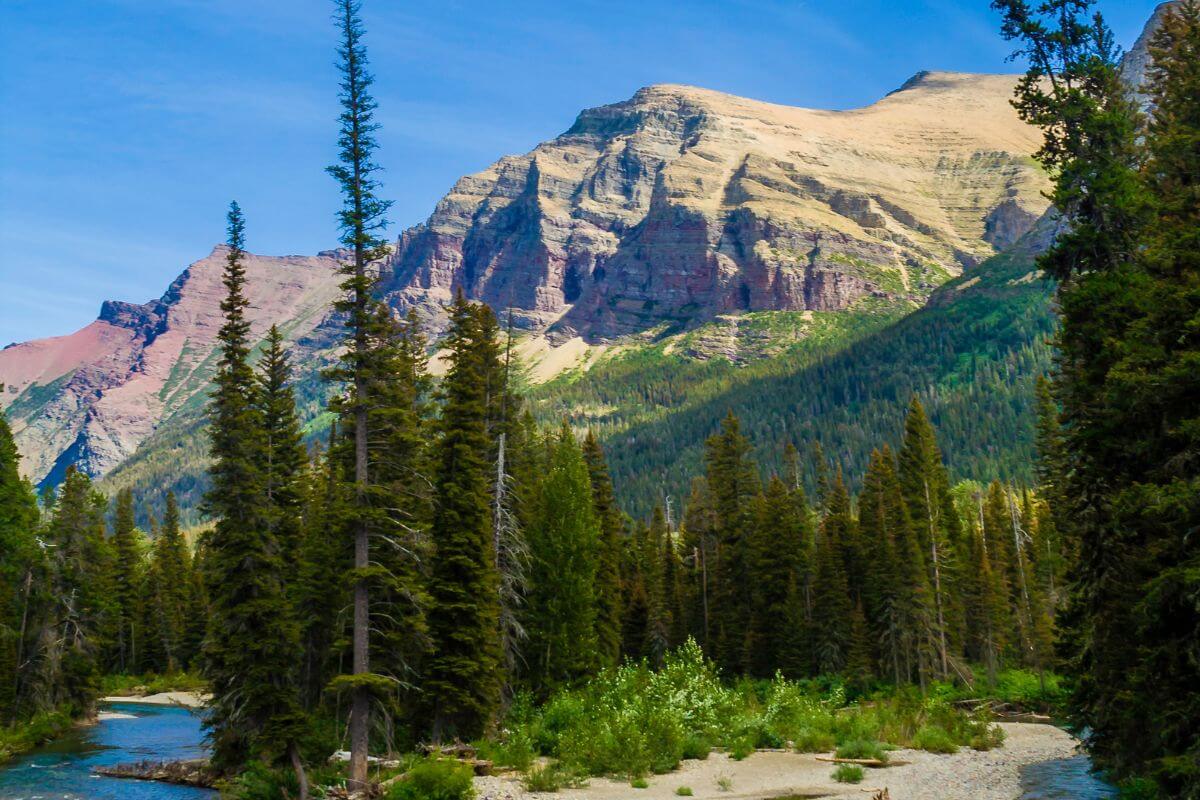
Montana’s vast and untamed landscapes can be as unpredictable as they are breathtaking. To ensure your visit is both safe and enjoyable, it’s important to be aware of the potential warnings and dangers that come with exploring this rugged state.
1. Overall Risk: Relatively Low
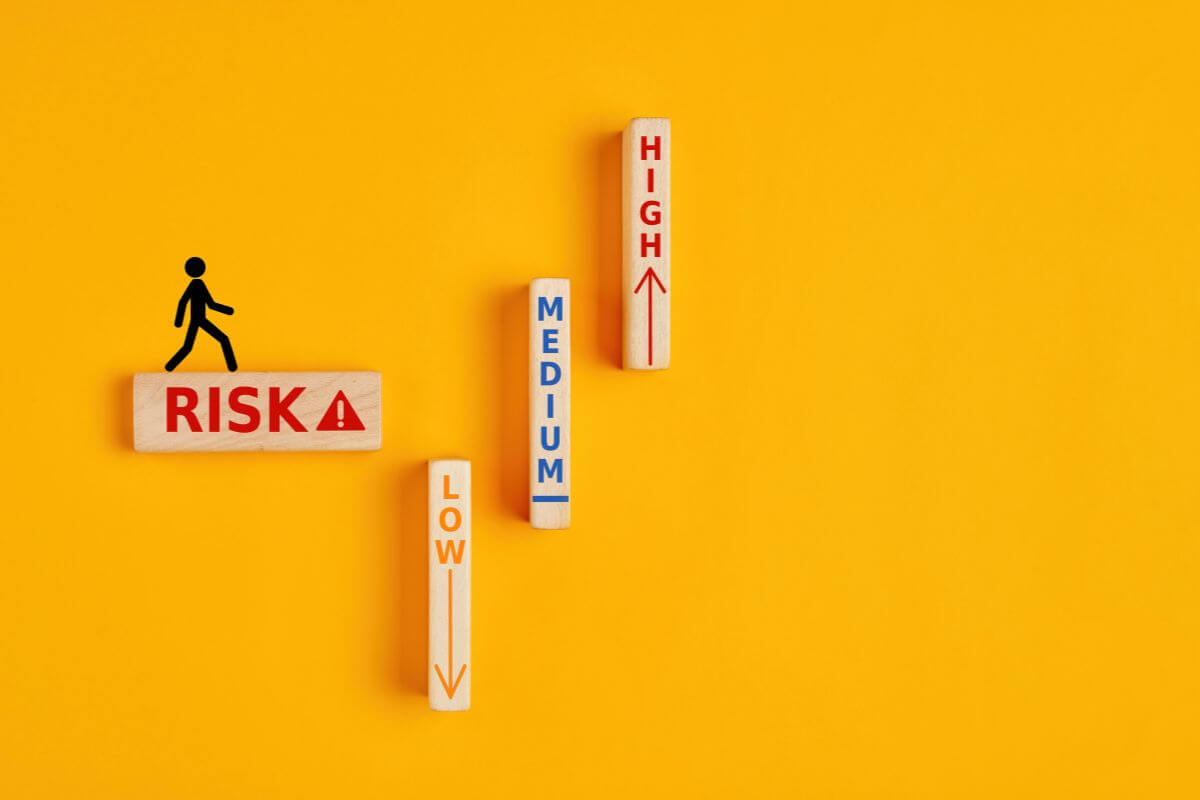
Montana is a relative breath of fresh air in terms of safety. While the FBI’s 2020 report indicates that the overall crime rate in the state exceeds the national average, this is largely attributed to significant variations in crime rates among cities.
The disparities between high-crime areas like Wolf Point and Ronan and low-crime locales such as Whitefish, Bozeman, and Columbia Falls contribute to a relatively high overall crime rate. However, the state’s sparse population and an environment less conducive to crimes result in a relatively low overall risk for safety.
Let’s not forget that Montana is largely rural, and with that comes a different set of considerations. The vast wilderness areas, while beautiful, can be unpredictable.
Safety Tips for Montana’s Rural and Wilderness Areas
- Always maintain a safe distance from wildlife. They may be the stars of your Instagram feed, but they’re still wild animals.
- Inform someone of your hiking or camping plans, especially if you’re venturing into more remote areas.
- Familiarize yourself with basic wilderness skills, like reading maps and using a compass.
- Dress appropriately for the weather, which can change rapidly in Montana.
- Carry essential items like a first-aid kit, extra food, and water.
Remember, the key to a safe Montana adventure is preparedness. Be it for a sudden snowstorm or a curious bear, a little knowledge and planning go a long way.
2. Transport & Taxis Risk: Low
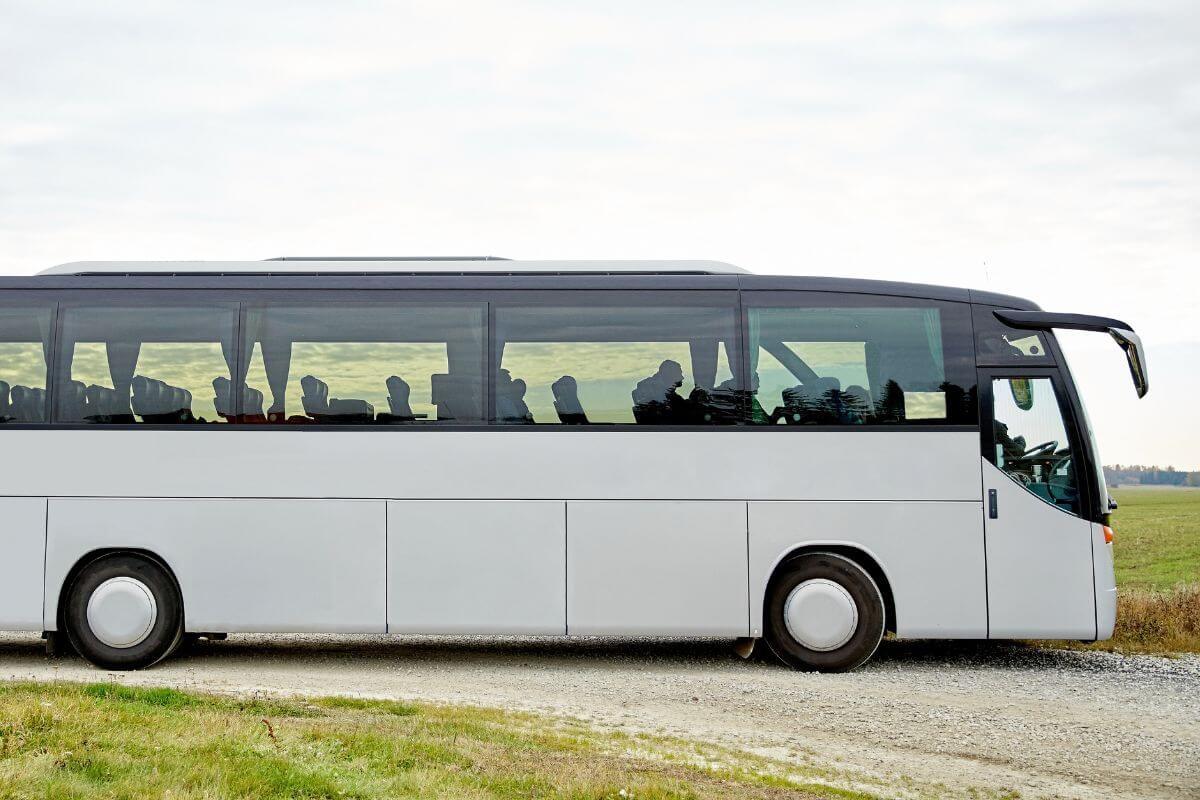
Compared to bustling metropolises, Montana’s public transportation system isn’t as extensive, but that’s not necessarily a bad thing. The limited availability of public transport contributes to a lower risk profile when it comes to transport and tax-related issues.
The state’s crime rate involving public transportation is notably low. For instance, when you’re taking a bus for inter-state travel, you can generally expect a safe and uneventful journey. However, it’s always wise to keep an eye on your belongings and be aware of your surroundings, as with any public space.
Now, let’s talk about the roads. Montana’s highways and byways are generally well-maintained, but there are a few caveats to keep in mind:
- Driving Speed and Wildlife – Montana is home to some stunning national parks, like Glacier National Park. When you’re out on the road, especially in park areas, always obey the speed limits and stay vigilant for wildlife crossings to avoid vehicle trouble.
- Weather Conditions – Daily weather checks, especially in winter, are crucial. Certain roads may close due to heavy snowfall, so it’s essential to plan your routes accordingly.
Despite these factors, the overall risk for transport and tax-related issues remains low for visitors to Montana. The key is to exercise the same level of caution and common sense you would in any other location.
3. Pickpockets Risk: Low
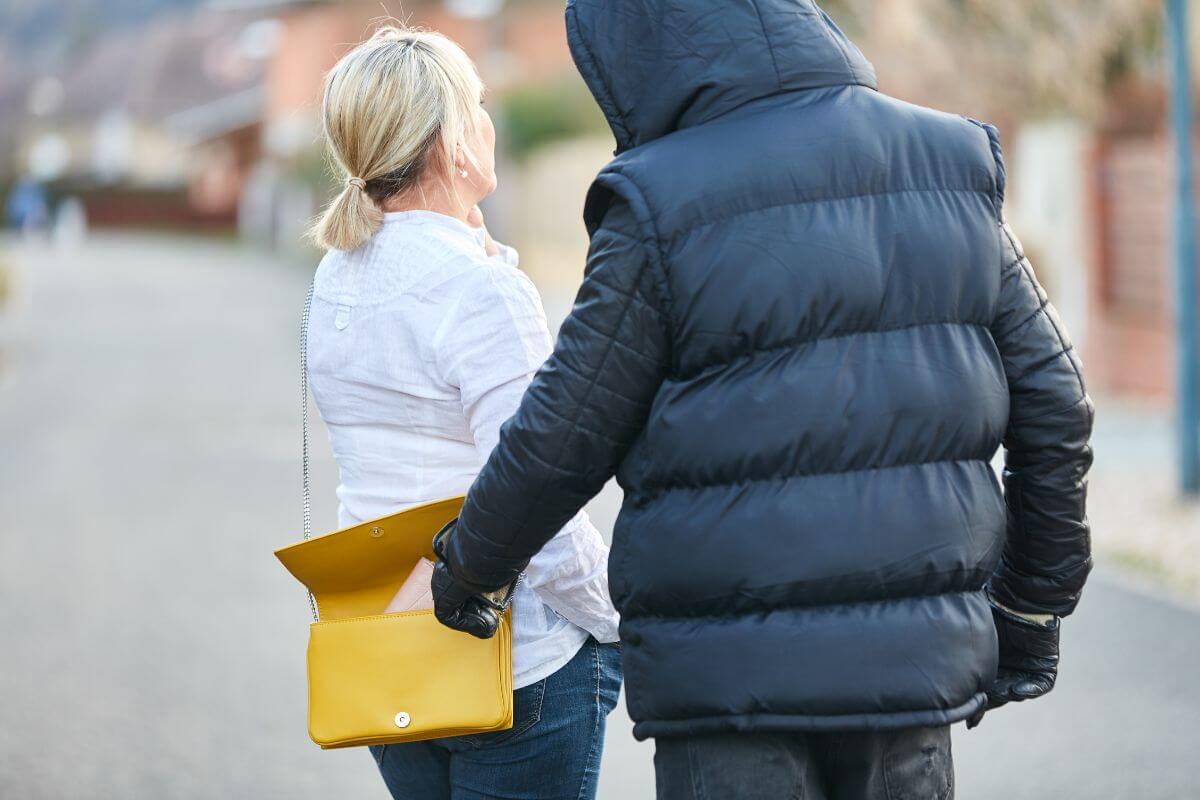
Montana’s rural and less congested areas offer a welcome respite from the pickpocketing perils that can plague crowded tourist destinations.
According to a reliable travel safety guide, the risk of pickpocketing in Montana is refreshingly low. While it’s not a pervasive issue, it’s worth noting that in popular national parks like Glacier National Park and Yellowstone National Park, where crowds are more common, there is a slightly higher risk.
Let’s put the numbers into perspective. Over the past five years, Livingston, a charming city in Montana, has seen just one pickpocketing incident and one purse snatching annually.
Similarly, Missoula, with its laid-back vibe, has witnessed a decline in robbery rates since 2018. These figures, although low, remind us that no place is entirely immune.
To ensure your Montana adventure remains worry-free, here are some standard precautions to keep in mind:
- Secure Your Valuables – Invest in a sturdy backpack or a money belt to keep your essentials close and less accessible to potential thieves.
- Be Mindful of Your Surroundings – Especially in tourist-heavy areas or during large events, keep an eye on your belongings and stay alert.
- Avoid Flaunting Wealth – While Montana is generally safe, it’s wise to avoid drawing unnecessary attention to expensive gadgets or jewelry.
In a state where the pace is unhurried and the landscapes vast, the risk of pickpocketing may be low, but a little vigilance goes a long way in ensuring a seamless and secure adventure.
4. Natural Disaster Risk: Medium
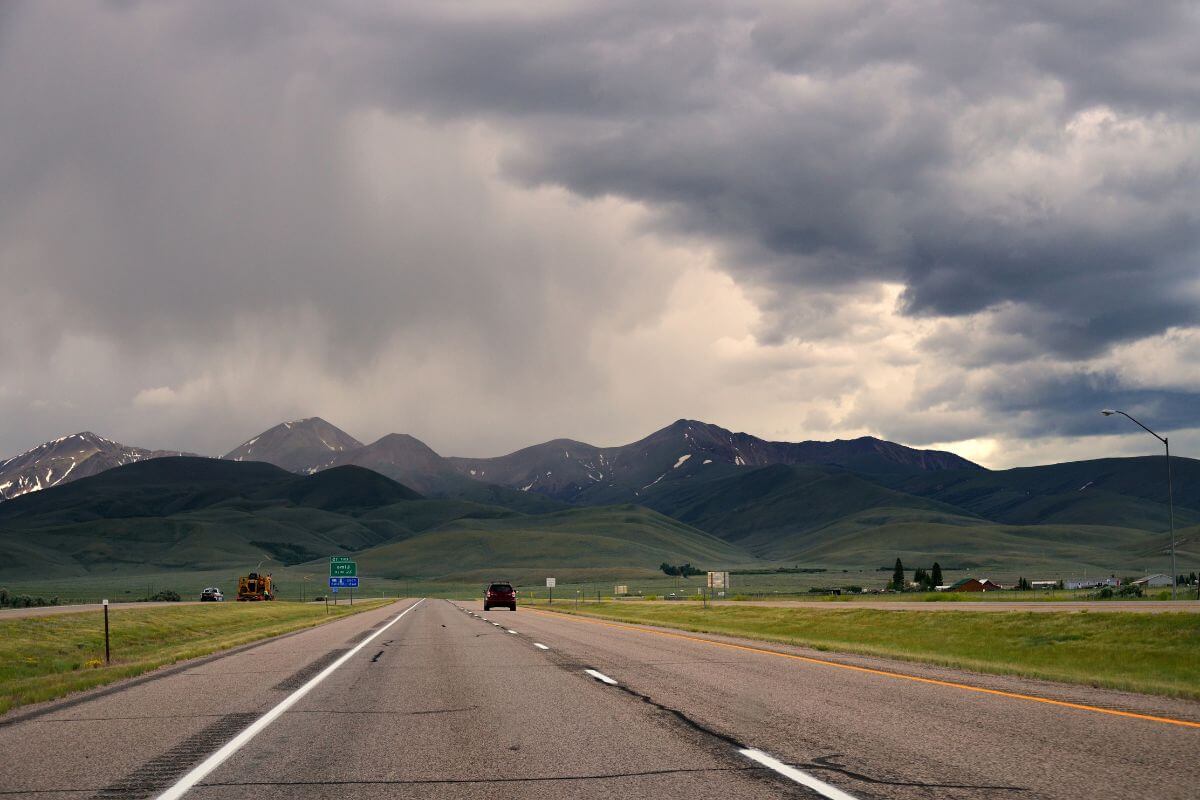
Montana’s allure lies in its untamed landscapes, but it’s essential to respect the interplay between man and nature. The state’s medium risk of natural disasters means you should be prepared, not worried.
Here’s what you need to know:
- Montana’s Natural Hazard Roster – Wildfires, Extreme Wind, Winter Storms, Severe Thunderstorms, Tornadoes, Flooding, Drought, and Avalanches.
- Historical Perspective – Between 1953 and 2019, Montana declared 72 major disasters, with fires and floods being the most common, according to FEMA.
- Fire, the Fiery Foe – Wildfires are a significant threat, with Montana ranking highest in the nation for the number of properties at risk.
- Winter Woes – Severe winter weather can pose risks for travelers from November to April.
- Earthquakes – They happen, but most are minimal in damage. Check your area’s vulnerability and plan accordingly.
Despite its natural risks, Montana remains a safe destination for visitors just as you’d prepare for a beach vacation with sunscreen.
Montana’s natural beauty is a gift, and it’s best enjoyed with a little caution. By understanding the risks and planning accordingly, you can make the most of your Montana adventure while keeping safety a top priority.
5. Mugging Risk: Low
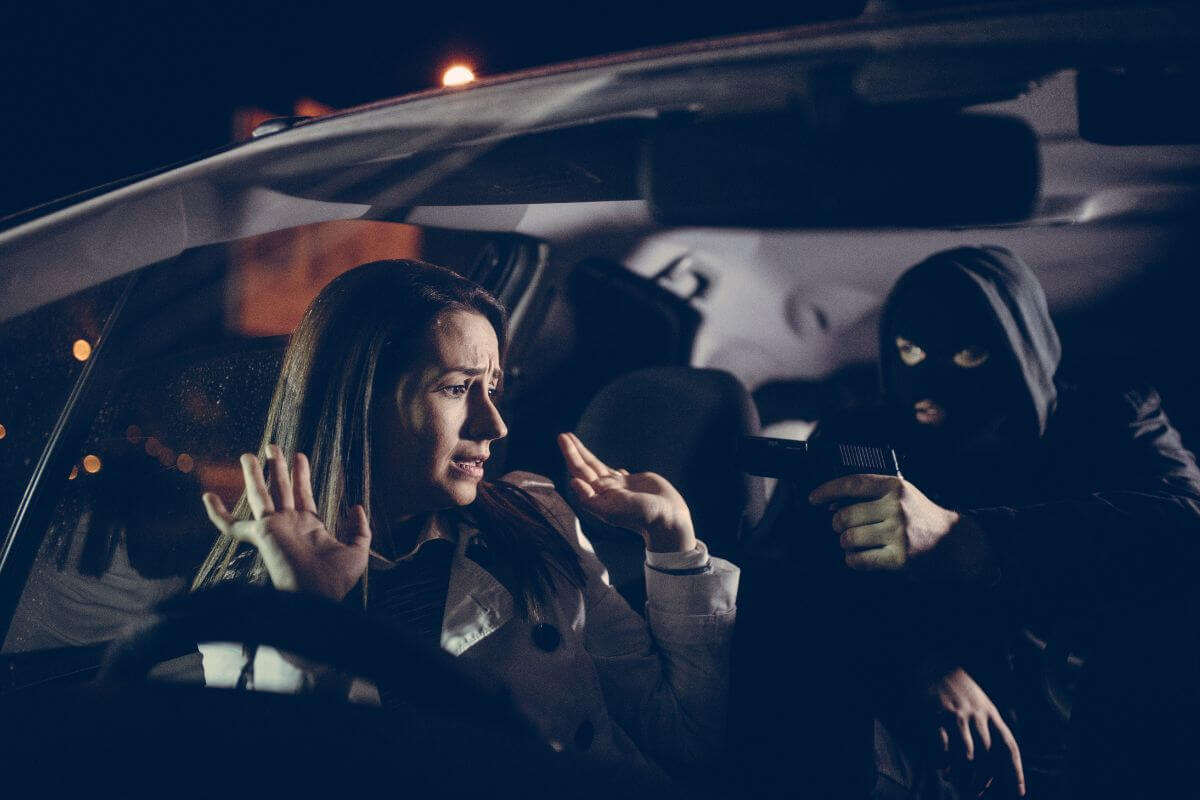
Montana’s rugged landscapes and wide-open spaces not only offer breathtaking vistas but also a significant perk: a low risk of mugging.
With its predominantly rural nature and limited congested areas, the Treasure State doesn’t rank high on the mugger’s map. The sparse population density and the freedom to move around without the hustle and bustle of big cities contribute to this reassuring statistic.
For instance, take the city of Bozeman, a vibrant Montana hub. In a year, you’ll find no more than 10 reported robberies in this charming college town. Given that Bozeman is a property crime rate outlier, you can feel even more confident about your safety.
The bottom line is this: Montana’s mugging risk is low, but that doesn’t mean you should let your guard down completely. By following these basic safety measures, you can fully enjoy the state’s natural wonders and charming towns without worry.
6. Terrorism Risk: Low
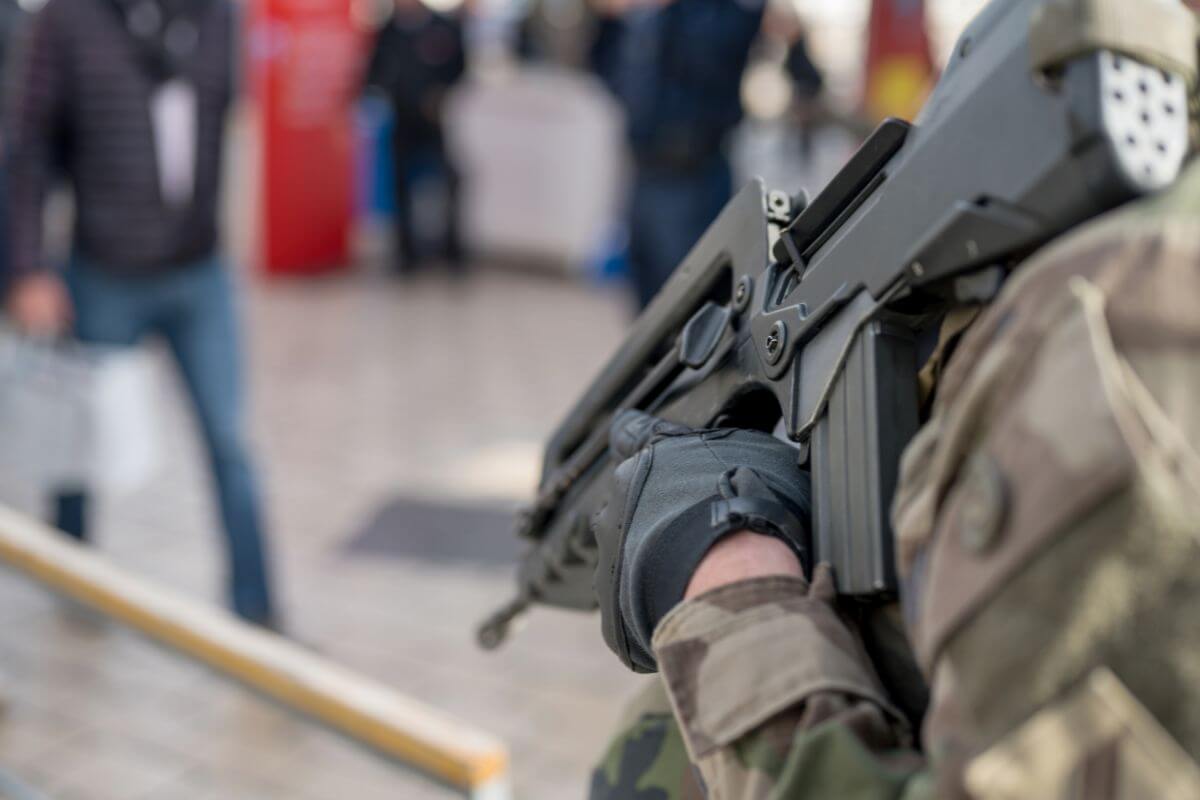
Montana may be known for its wide-open spaces and rugged landscapes, but what about the risk of terrorism in Big Sky Country? Because the state’s predominantly rural nature works in its favor. With fewer crowded areas and big cities, the potential impact of a terrorist attack is significantly minimized.
Unlike major urban centers, Montana has a limited number of densely populated regions. This makes it less attractive to those seeking to cause large-scale harm or disruption.
However, Montana has had its share of domestic terrorists, most notably the Unabomber, Ted Kaczynski. However such cases are rare, and the overall risk remains low. It’s a reminder to stay vigilant, but not to let fear dictate your travels.
Montana is a place where you can truly escape the hustle and bustle of modern life, and that includes the anxieties that come with it.
7. Scam Risk: Low

Montana may be a haven for wide-open spaces and serene landscapes, but like anywhere else, it’s not completely immune to scams. These scams have cost Montanans over $700,000.
The overall risk of scams in Montana is relatively low. The state’s residents are actually the least vulnerable to identity theft and fraud in the entire country, according to a study that ranks all 50 states.
So, what can you do to stay on the safe side? Here are some actionable tips:
- Always Verify – Whether it’s a link, a website, or an email address, always double-check before you click or share any personal information.
- Don’t Rush – Scammers often create a false sense of urgency to pressure you into making hasty decisions. Take your time and think things through.
- Stay Informed – Keep up with the latest scams and fraud trends in the state. Local news outlets and law enforcement agencies often share updates and warnings.
Now, let’s talk vacation rentals, a common area where scams can occur. The same vigilance applies here:
- No Wiring Money – Avoid wiring money for rental bookings; it’s a red flag for potential scams.
- Video Call – Insist on conducting a video call with the person renting out the property. It’s a simple step that can help you weed out scammers.
- Rental Permits – Always request a rental permit and verify its authenticity before making any payments.
By following these simple guidelines, you can enjoy the best of Montana’s hospitality without falling victim to any scams.
8. Women Travelers Risk: Low
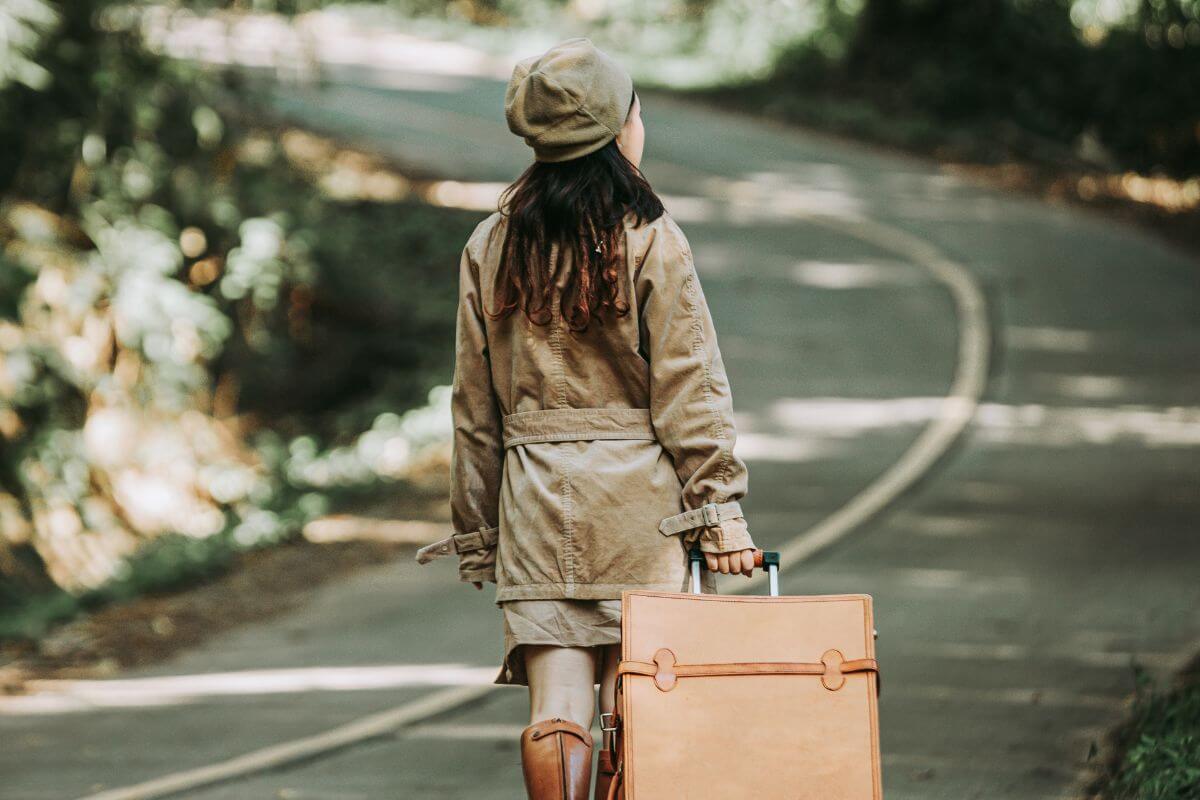
Montana is a state where you can feel confident embarking on your adventures. The risk for women travelers is generally low, with violent crimes being quite rare.
While it’s always important to stay vigilant, you can breathe a little easier knowing that Montana is considered a safe destination.
Here are some tips to ensure your trip remains worry-free:
- Familiarize Yourself with the Wilderness – Montana’s vast landscapes are part of its allure, but it’s crucial to understand the potential risks. Learn about wildlife safety and weather patterns before you head out.
- Opt for Group Travel – When venturing into the wild, it’s recommended to travel with at least two additional individuals. Larger groups provide added support during emergencies or wildlife encounters.
- Friendly Airports and Transportation – From the moment you arrive, you’ll notice that Montana’s airports and transportation options are designed to be traveler-friendly. You can expect a warm welcome and assistance tailored to your needs.
- Helpful Local Police – Montana’s local police are known for being helpful and responsive. If you ever find yourself in need, don’t hesitate to reach out. The local authorities are there to ensure your safety and comfort.
Just remember to take the necessary precautions, remain aware of your surroundings, and enjoy the beauty of Montana with peace of mind.
9. Tap Water Risk: Medium
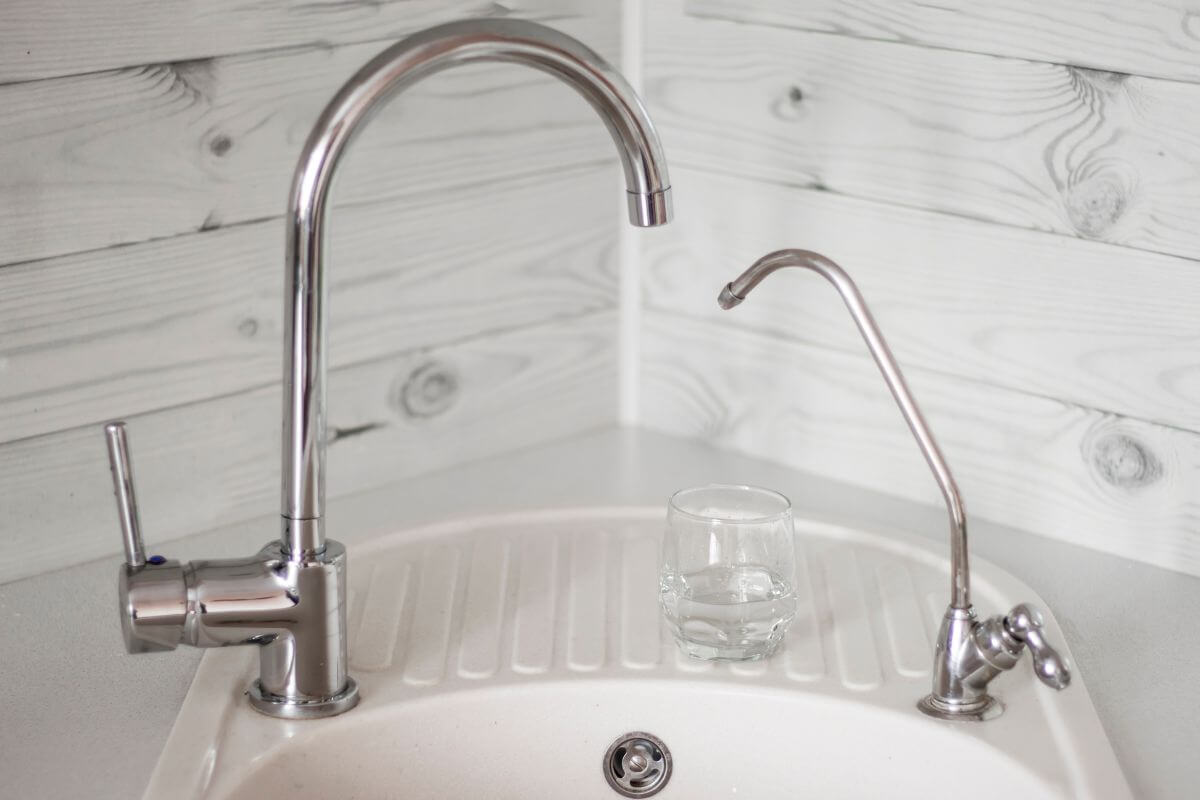
Montana’s tap water is a mixed bag — literally. While some areas boast pristine H2O, others have a higher risk due to the presence of contaminants.
An Environmental Working Group (EWG) report identified a staggering 65 contaminants across the state’s water supply, with 17 exceeding health or legal limits. Some of the usual suspects include ammonia, fluoride, and arsenic.
Your tap water experience in Montana can range from crystal clear to a tad murky. For instance, Bozeman, a town celebrated for its water quality, was ranked among the top five best-tasting water sources in the U.S. by the American Water Works Association (AWWA) in 2019.
Now, before you start chugging Bozeman’s tap water like it’s the elixir of life, remember that even in the safest areas, it’s wise to filter your water effectively. This simple step ensures that you’re safeguarding your health for the long haul.
While Montana’s tap water is generally safe to drink, it’s essential to be location-aware. Filtering your water is a smart move, even in towns with a sparkling reputation like Bozeman. After all, nothing should come between you and a worry-free adventure in the Treasure State.
Montana’s Safest Destinations to Visit
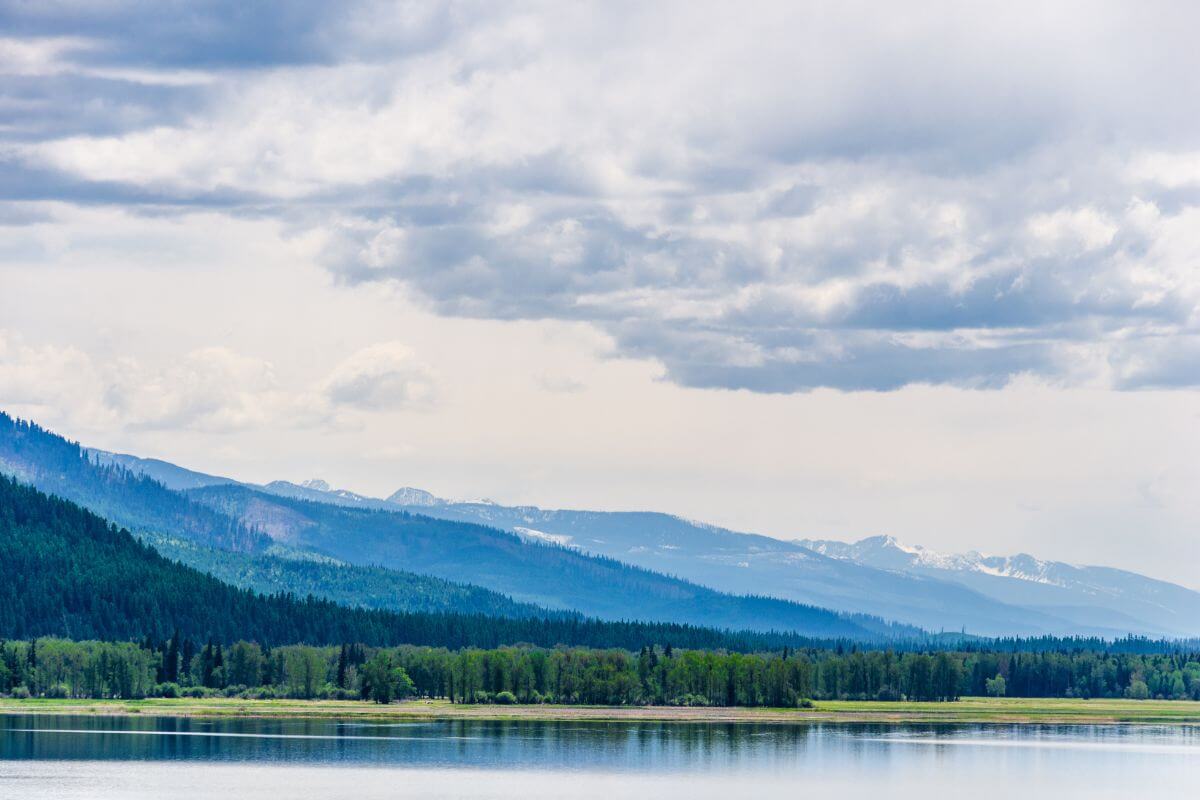
If you’re the kind of traveler who likes to double-check the safety stats before packing your bags, you’ll be pleased to know that Montana, as a whole, ranks high in terms of safety. But within this already secure state, there are a few cities that stand out for their remarkably low crime rates. Let’s take a closer look at these Montana gems:
- Columbia Falls – With a population of just over 5,000, Columbia Falls boasts a crime rate well below the national average. It’s the kind of place where you can leave your car unlocked without a second thought.
- Glendive – The city’s low crime rate is a testament to the strong sense of community and neighborly values that define this corner of Montana. Whether you’re stopping by for a night or planning a longer stay, Glendive offers a secure environment.
- Whitefish – This popular tourist destination also happens to be one of the safest cities in Montana. With a low violent crime rate and a strong local economy, it’s a place where you can relax and enjoy all the amenities without worry.
- Miles City – With a population of around 8,400, Miles City manages to maintain a low crime rate while offering a variety of amenities.
These destinations have a high number of permanent residents, which fosters a sense of community and accountability. Their robust local economies also provide ample job opportunities, reducing the likelihood of criminal activities.
Least Safest Places in Montana
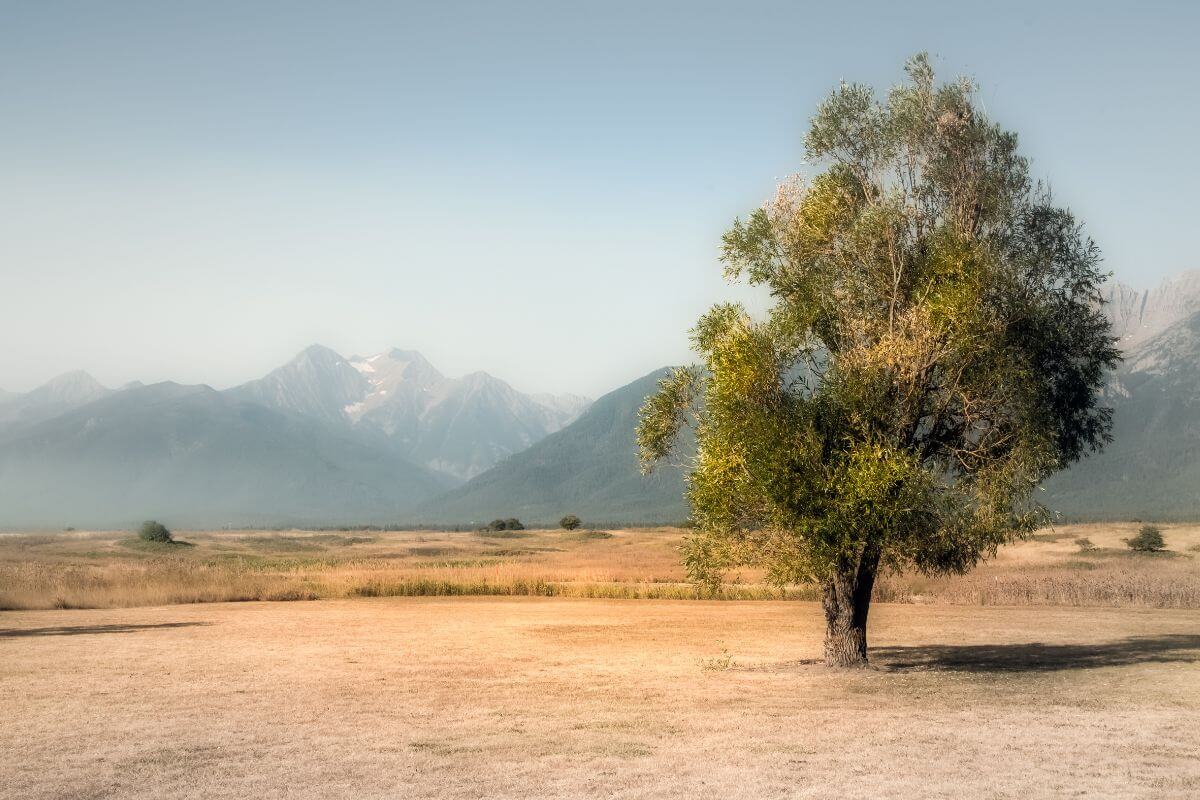
If you’re considering a trip to Montana, it’s essential to be aware of the state’s overall safety. While Montana is generally a secure place to visit, there are a few towns that have experienced higher crime rates than others.
Here are three locations that, according to recent data, have shown elevated crime rates compared to the state average:
- Ronan – Located in Lake County, Ronan tops the list as the town with the highest crime rate among the ones surveyed. However, it’s important to note that the overall probability of becoming a victim here is still relatively low.
- Wolf Point – Situated in Roosevelt County, Wolf Point has also seen increased criminal activities, particularly property crimes.
- Hamilton – Located in Ravalli County, Hamilton is another town that has experienced a slightly higher crime rate than the state average.
These towns in Montana are generally smaller and may have less prosperous economies, factors that can sometimes correlate with higher crime rates.
However, it’s important to keep these statistics in perspective. Even in Ronan, which tops the list, the chances of becoming a victim are still relatively low. If you’re considering a visit to any of these towns, it’s worth taking extra precautions, such as avoiding unfamiliar areas at night and securing your belongings.
Remember, these towns are just a small part of Montana’s vast landscape, and there are plenty of other communities that offer a safe and enjoyable travel experience.
Safety Tips for Montana Visitors
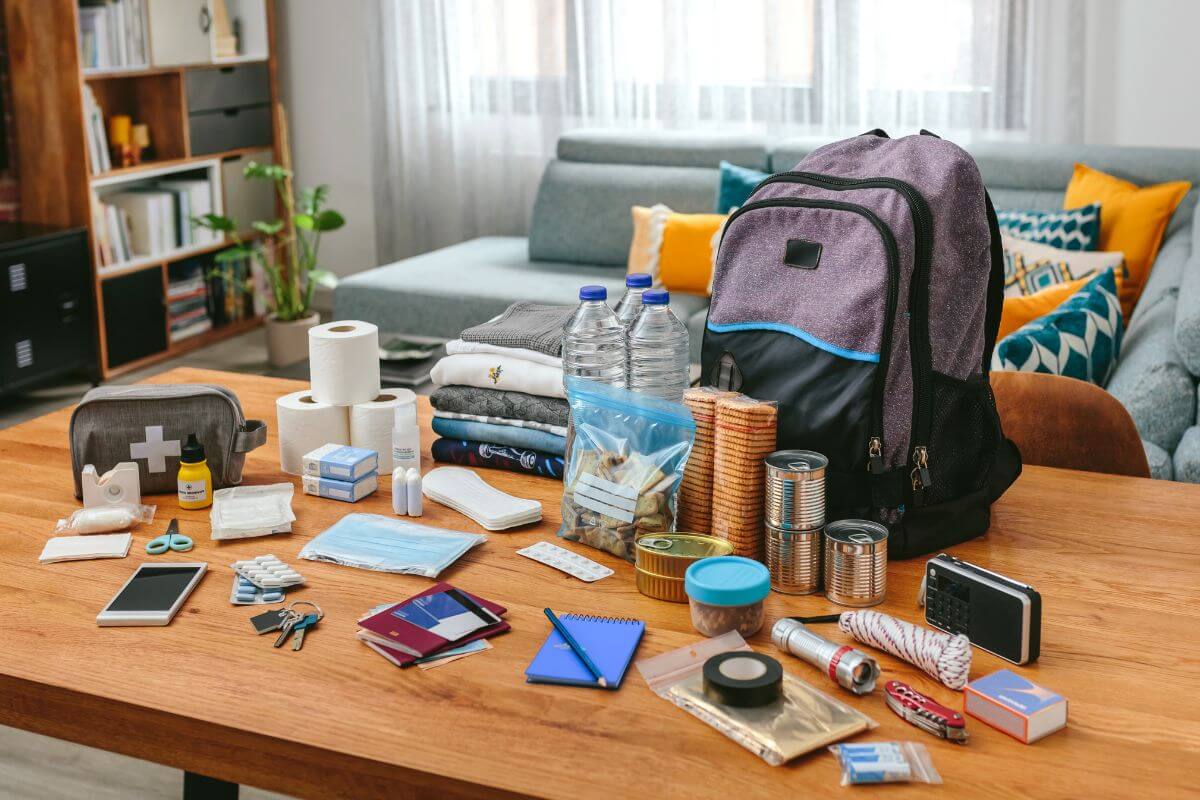
Montana is a place of rugged beauty and vast wilderness, but like any destination, it’s important to prioritize your safety. Here are some actionable tips to keep in mind during your visit:
- Drive and Prepare Safely – When traveling to Montana, drive slowly and defensively, and keep emergency supplies readily available. Be prepared for wildlife encounters and changing weather conditions.
- Be Mindful of the Water Safety: Be cautious of the water. Some areas may have tap water risks, so it’s essential to stay informed about the water quality in the specific location you are visiting.
- Know the Safest and Most Dangerous Places – Be aware of the safest and most dangerous places in Montana. While the state, in general, is safe, it’s helpful to know which areas have the lowest crime rates.
- Dress in Warm Clothing and Prepare for the Weather – Montana’s weather can be delicate and dangerous. Take layers of clothing and pay attention to posted warnings and signs to ensure your safety.
- Stay Informed and Report Suspicious Activity – Stay informed about the local safety guidelines and report any suspicious activity to the authorities. It’s essential to be aware of your surroundings and take necessary precautions to have a safe and enjoyable visit to Montana.
- Ensure You Have Emergency Supplies on Hand – Given Montana’s rural nature, traveling for extended periods without access to essential items is common, so preparedness is crucial.
By following these tips, you can ensure a safe and worry-free visit to the Treasure State. Remember, your safety is the key to unlocking the best of Montana’s offerings.
How Does Montana Safety Compare to Other U.S. States?
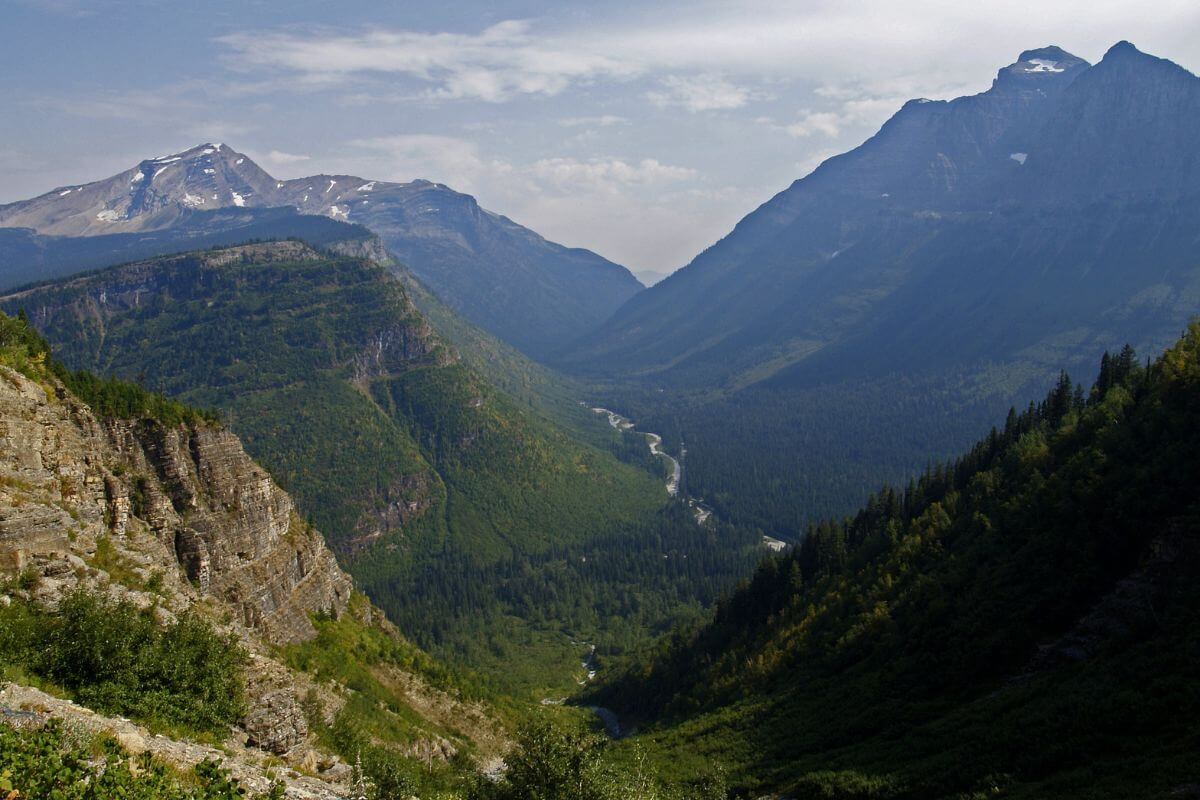
If you’re the kind of traveler who likes to weigh the pros and cons of your destination, you’ll be glad to know that Montana ranks pretty high in terms of safety.
Here’s a quick safety index rundown of some popular states you might be considering:
| State | Safety Index |
| Montana | 88 |
| Kansas | 81 |
| Iowa | 82 |
| Idaho | 85 |
| Illinois | 77 |
| Indiana | 61 |
| Alaska | 65 |
| Colorado | 82 |
| Florida | 70 |
In my travels across Montana, I’ve found the locals to be friendly and helpful, and incidents of petty crime or safety concerns were few and far between. Of course, it’s always wise to exercise the same caution you would in any unfamiliar place — lock your car, be aware of your surroundings, and follow any local safety guidelines.
Montana Safety Final Thoughts
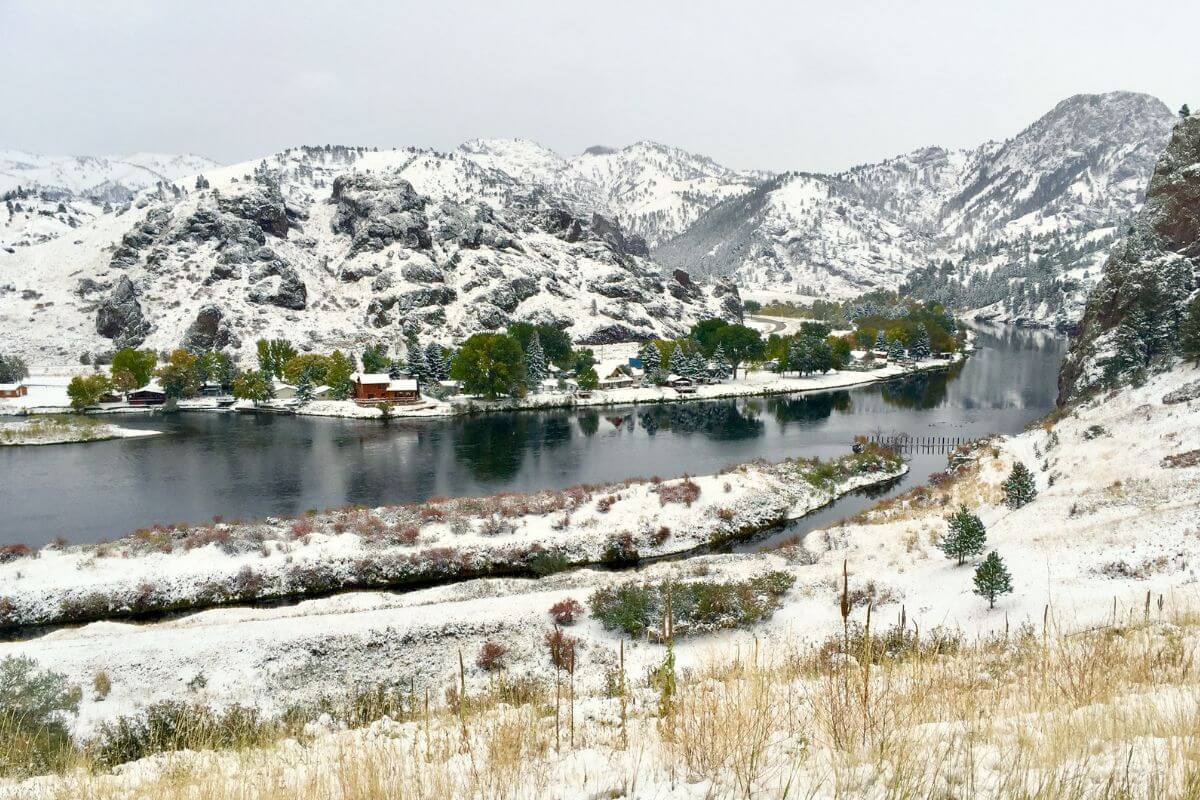
Montana is known for its tranquil landscapes and low risks for crime, with violent crime rates notably lower than the national average. But don’t let the serenity lull you into a false sense of security. As you venture into the rural wilderness, keep an eye out for wildlife encounters and be prepared for the unexpected.
Transportation risks are generally low, given the limited public transport. However, wildlife and winter conditions can pose challenges, so exercise caution, especially on remote roads. In less congested areas, pickpocketing is a rarity. But as you explore popular tourist spots, it’s wise to remain vigilant and secure your belongings.
Also, Montana’s medium natural disaster risks, such as wildfires and severe weather, call for preparedness. Stay informed, pack emergency supplies, and heed local advisories. And while scams are relatively uncommon, it’s always wise to stay alert and avoid sharing personal or financial information with strangers.
Women travelers also generally find Montana to be a secure environment. However, the quality of tap water can vary, so it’s advisable to carry a reusable water bottle with a filter or stick to bottled water.
Crime rates can vary across cities. Some areas have lower risks, while others may exhibit elevated rates. Familiarize yourself with local safety information before you go.
Your priority in Montana should be safety measures and awareness. By taking simple precautions, you can ensure both a safe and unforgettable experience in the Treasure State.
Montana Safety FAQs
1. Is Montana a Safe Place to Travel?
Montana is generally a safe destination for travelers, boasting low crime risks for mugging and terrorism.
However, its rural areas necessitate vigilance, particularly during wilderness exploration due to wildlife encounters.
But with basic safety measures and awareness, visitors can enjoy a secure and memorable experience in Montana.
2. What Is the Downside of Living in Montana?
One downside of living in Montana is the harsh winter weather, which can bring extended cold temperatures and heavy snowfall, impacting daily life and transportation.
The state’s rural nature might also limit access to certain amenities or services commonly found in more urban areas.
3. How Can We Stay Safe in Montana?
Staying safe in Montana involves being vigilant in rural towns and areas, especially during wilderness exploration, by watching for wildlife encounters.
It’s important to maintain basic safety measures, be cautious of changing weather conditions, and stay aware of surroundings, particularly in crowded or tourist-heavy spots.
Eager to learn more? Explore our Montana section for further insights:

